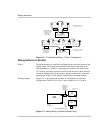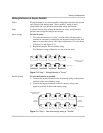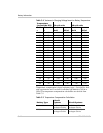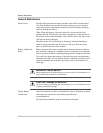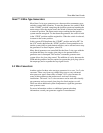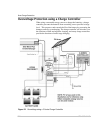
Battery Maintenance
976-0043-01-02 C–17
State of Charge The battery’s state-of-charge should be checked often and only when the
battery at a state of rest (when the battery is not powering loads or
actively being charged). First thing in the morning is usually the best time
to check the state of charge. If the batteries are readily accessible,
measure the voltage across the individual battery terminals. There should
be less than a 0.2 volt difference between each battery.
To determine the individual cell voltage, divide the voltage by the number
of cells in the battery (25.2 volts divided by 12 cells = 2.1 volts per cell).
If a greater difference is measured, the batteries may need to be equalized
(liquid lead-acid types only) or replaced.
All batteries in the bank should measure the same voltage (this is not an
accurate measurement for cross-tied batteries’ as each battery is in
parallel with another battery making individual battery measurements
impossible).
The voltage should match the following table for the entire battery bank
output. These values indicate the overall battery’s state of charge for the
entire bank. Individual cell voltages (if available) are also shown as a
percentage of charge.
The values given are for a temperature of 77 °F (25 °C). Cooler
temperatures produce lower voltage measurements.
Table C-6
Battery State-of-Charge
System Voltage
Percent of Full
Charge 12 Volt 24 Volt 48 Volt
Individual
Cell
Voltage
100% 12.7 25.4 50.8 2.12
90% 12.6 25.2 50.4 2.10
80% 12.5 25.0 50.0 2.08
70% 12.3 24.6 49.2 2.05
60% 12.2 24.4 48.8 2.03
50% 12.1 24.2 48.4 2.02
40% 12.0 24.0 48.0 2.00
30% 11.8 23.6 47.2 1.97
20% 11.7 23.4 46.8 1.95
10% 11.6 23.2 46.4 1.93
0% <
11.6 < 23.2 < 46.4 < 1.93




